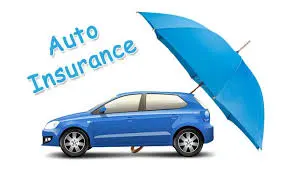Selecting the right car insurance can be a daunting task, given the myriad of options available in the market. However, understanding your needs and evaluating the various aspects of insurance policies can simplify this process. Here’s a step-by-step guide to help you choose the best car insurance for your specific requirements.
1. Assess Your Coverage Needs
The first step in choosing car insurance is to assess your coverage needs. This will depend on several factors:
- State Requirements: Each state has minimum insurance requirements that drivers must meet. This often includes liability insurance, which covers damages to others if you are at fault in an accident.
- Vehicle Value: If you have a new or expensive car, you might want to consider comprehensive and collision coverage. Comprehensive covers damages not caused by collisions (e.g., theft, natural disasters), while collision covers damages from accidents.
- Personal Situation: Consider your driving habits, location, and financial situation. If you drive frequently in high-traffic areas, additional coverage might be prudent. Additionally, your financial situation will influence how much deductible you can afford and how much coverage you need.
2. Compare Different Insurance Providers
Not all insurance providers are created equal. Here are some key factors to consider when comparing them:
- Reputation and Reliability: Research the reputation of various insurance companies. Look for reviews and ratings from trusted sources such as J.D. Power, Consumer Reports, and the Better Business Bureau. These can provide insight into the company’s customer service, claims process, and overall reliability.
- Financial Stability: Ensure that the insurance company is financially stable and capable of paying out claims. You can check their financial ratings through agencies like A.M. Best, Standard & Poor’s, and Moody’s.
- Customer Service: Good customer service is crucial, especially when dealing with claims. Look for companies that offer 24/7 support and have a reputation for resolving claims efficiently.
3. Understand the Types of Coverage
Understanding the various types of coverage available is essential:
- Liability Insurance: Covers bodily injury and property damage to others if you are at fault in an accident. This is typically required by law.
- Collision Insurance: Covers damage to your vehicle in the event of an accident, regardless of who is at fault.
- Comprehensive Insurance: Covers non-collision-related damages such as theft, vandalism, and natural disasters.
- Personal Injury Protection (PIP): Covers medical expenses and lost wages for you and your passengers, regardless of fault.
- Uninsured/Underinsured Motorist Coverage: Protects you if you’re involved in an accident with a driver who doesn’t have sufficient insurance.
- Gap Insurance: Covers the difference between the value of your car and the amount you owe on your loan if your car is totaled.
4. Get Multiple Quotes
It’s essential to get quotes from multiple insurance providers to compare rates and coverage options. You can do this by:
- Online Comparison Tools: Use online tools to get quotes from several companies simultaneously.
- Independent Agents: Work with independent insurance agents who can provide quotes from multiple insurers.
- Direct Contact: Contact insurance companies directly to get personalized quotes.
5. Look for Discounts
Many insurance companies offer various discounts that can help reduce your premiums. Some common discounts include:
- Safe Driver Discounts: For drivers with a clean driving record.
- Bundling Discounts: For bundling multiple policies, such as home and auto insurance.
- Good Student Discounts: For students with good grades.
- Low Mileage Discounts: For drivers who don’t drive many miles annually.
- Safety Features Discounts: For cars equipped with safety features like anti-lock brakes, airbags, and anti-theft devices.
6. Read the Fine Print
Before committing to a policy, carefully read the terms and conditions. Pay attention to:
- Exclusions: Understand what is not covered by the policy.
- Limits: Know the maximum amount the insurance will pay for different types of claims.
- Deductibles: Be aware of how much you’ll need to pay out of pocket before your insurance kicks in.
- Premium Increases: Check how and when your premiums might increase, such as after an accident or traffic violation.
7. Consider Customer Support and Claims Process
A smooth claims process and good customer support can make a significant difference. Research how easy it is to file a claim, the responsiveness of the customer support team, and the overall satisfaction of other customers who have filed claims with the company.
Conclusion
Choosing the best car insurance involves a careful assessment of your needs, thorough research, and comparison of different providers. By understanding the types of coverage, looking for discounts, and reading the fine print, you can find a policy that offers the best protection at a reasonable price. Remember, the cheapest option is not always the best; prioritize value and reliability to ensure peace of mind on the road.

